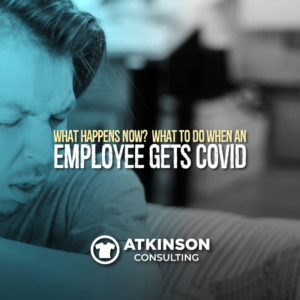Guess what? 2019 is more than half over!
How are you doing with the goals that you set back at the end of 2018? Crushing it? Almost there? Never got started?
Regardless of your results, these next six months can have a tremendous impact on your year. How are you going to use them?
Think of this article as that coach you had in high school screaming at you. Here’s my favorite inspiring taunt from the football practice field from back then: “Atkinson! Get up! You are killing the grass!”
Lots of people get stuck or have underwhelming results. Some people start off great but then peter out as they realize that this industry is a marathon, not a sprint. My idea with this article is for you to find a nugget of inspiration that you can absorb to push yourself to new record-setting results.
Finish Idea #1: Teamwork
Use your team. If you don’t have a team get one.
The most precious commodity you have is time. Yet, when I talk to shop owners and managers they all tell me that they don’t have enough of it. When we dig down into their day, they are spending a lot of their precious time doing things that they could hand off to someone.
Want better results? Spend the time you have on things that matter.
Every minute you spend doing something that you hate, aren’t good at, or could hand off to someone else, is a minute of your day wasted.
Do yourself a favor. Chart how many minutes you are using up every day on tasks like this. Go ahead I’ll wait.
On your staff, is there someone that could accomplish any of those tasks for you? Is there an outsource partner that could do it? Maybe an app or some software? There are plenty of ways to get things handled besides you slogging through it.
Besides, their results could be even better than if you handled it. Imagine that.
Then, you can spend that hour or three on something that really matters…growing your business. Don’t get sucked in on menial tasks.
Finish Idea #2: Psychological Safety
Is your crew scared to speak up? Can they tell you that the “emperor has no clothes” or suggest a better way of doing something?
One thing that holds companies back is fear.
To have better success, sometimes you need to do things differently. So what happens when nobody wants to suggest something, or learn a new way of operating?
Nothing.
That’s the point.
When you are in the conference room or out on the production floor and your crew can’t honestly open up about your challenges, that is bad management and leadership. Plain and simple.
The best shops I’ve seen work together to solve problems. Their crews have the psychological safety net built where there can be discussions, debates, and even arguments without recourse. This is how engaged teams operate.
You need this freedom to explore crazy ideas. “What if” ideas don’t come out unless there is a safe place to stand upon. People simply keep their mouth shut.
From now until the end of the year, what crazy ideas are being discussed with your team?
If your answer is “nothing”. Then think about how that translates to your growth.
Finish Idea #3: Fundamentals
One thing that holds a lot of shops back in their growth is their inability to consistently complete the standard, everyday tasks the same way.
The internet, and especially Facebook groups, are full of these challenges.
“Why is my white ink bumpy?”
“How would you quote this…?”
“My customer called and they are upset because…?”
“I’ve been in business for five years and my sales are stagnant at…?”
These are all process controlled areas for your business. When things go wrong, your shop has to take a step back to fix something. You are never going forward as fast, as you spend time, energy, and capital trying to fix something. Because of a lack of sticking to fundamentals.
What makes superstar athletes, professional chefs, Navy SEALS, and other high-caliber people excel? Their understanding and practice of basic fundamentals in what they are doing.
Do you want to finish stronger in the last six months of the year than the first half dozen?
How are you on the standards? If you don’t know these things, what are you doing in an on-purpose effort to learn them?
Take a minute and work on creating the processes you need to achieve success. Once this is in place, performance and expectations elevate. This is in sales, customer service, production, marketing, employee management, even hiring.
You can do better. I know you know this.
Finish Idea #4: Metrics
It’s not a secret. Metrics. Data. Numbers.
Are you keeping these? Do you know your numbers? Hell, are you even talking about what numbers to track and why they matter?
Often the reason why we don’t get the results that we want is that nobody is benchmarking performance along the way. It’s not enough to set a goal. Goal setting is great, but if you aren’t charting your progress how do you know when, where, and how to adjust?
Is it any surprise that you don’t reach your goal?
Let’s look at two examples here.
Example One – Learning something new
For the sake of discussion let’s say your shop wants to learn a new technique to increase sales and have something different to offer your customers. This is the goal of a lot of shops.
The number one predictor of success? Actually doing the work and failing.
Shops that spend a lot of time learning how to print with waterbase ink or learning to digitize and embroider 3D puff on hats are actually more successful at it than shops that just talk about it.
That’s right.
These shops seriously messed up a bunch of stock. They failed. But they kept at it and learned how to do it. They took a class or watched a video or two. Their suppliers helped when they could.
The more time they spent practicing the new stuff, the faster they learned how to do it. This was a scheduled activity.
They didn’t wait around for “someday”. These are busy shops. They knew that the only way they could get this knowledge was by actually turning in the work. So these jobs were scheduled, just like a paid job for a customer.
What were they tracking here? How many times the new stuff was on the schedule.
Imagine how different a learning curve is going to be from one shop that only tries something once, to a shop that schedules one learning lesson a day.
That’s a 30:1 difference.
At the end of the year, who has a better story to bring to their customers?
Example Two: Sales Goals
Ah. The dreaded sales goal.
Lots of shops throw a number out and stick on the wall. “Here’s our target”, they say.
But how many sales goals are backed up with sound strategy and tactics? “Here’s the plan for us to achieve the goal.”
Have you broken down your sales goal into a daily number? What does it look like with an average order total? Better, instead of looking 100% at the top-line number, what is the drop to the bottom line?
Are you benchmarking your sales? What’s the pipeline?
A lot of shops take a roller coaster ride with sales as the year goes on. It’s feast or famine. During busy times, it’s hard to get out and close more deals. As things dry up, there is a sudden panic.
“We need more jobs!”
Then there is a flurry of activity on social media and new shops sales and discounts are created to bring in work. Often at lower margin.
Instead of crippling your shop with that bi-polar sales strategy, what if your sales process was built on constantly targeting the best customers, with the best work for your shop?
This uses data. What’s the best type of job for your shop? You know, the one that you make good money on and is repeatable. What if you based your sales goal on cloning that type of job?
Who are those customers?
Sales metrics would be based on how many of these customers you need to talk to a day to fill up your pipeline with work. Knowing full well that there is a sales cycle and it takes repeated effort to close those deals.
The sales process could track all of the metrics associated with those conversations. Instead of just throwing a number on the wall and stating “This is our goal”, your process is built on daily and weekly benchmark numbers.
Tiny wins.
Cumulatively they will make up a larger number at the end of the Quarter.
Focus on what you are doing this week. Today. Maybe even by lunch.
Those are the stats that are worth tracking. As you can immediately see what is working, or not working.
No excuses.
Finish Idea #5: Ask for Help
You don’t have to go it alone. One weakness in this industry that I see is that so many shops get into a mentality that they can not ask for help.
It’s too embarrassing for them to let anyone know that they don’t know how to use a tension meter, or how to hire a salesperson. That mental block jams them up, and they struggle for years with the same problem.
Until the dam breaks and it’s an all or nothing affair to improve something.
Sadly it doesn’t have to be this way.
Help is all around you.
For starters, that’s what I do. But, if you don’t feel you are ready to talk to a shop performance coach you can reach out to your supply chain, other shops, and even the internet for help.
That problem or challenge you are facing? I hate to tell you, but you are not a unicorn. Almost always, those same problems turn up in shops everywhere.
Get past your pride and ask for help. Make the second half of 2019 a winner.
“When it is obvious that the goals cannot be reached, don’t adjust the goals, adjust the actions steps.” – Confucius
“There are risks and costs to action. But they are far less than the long-range risks of comfortable inaction.” – John F. Kennedy
“Inaction breeds doubt and fear. Action breeds confidence and courage. If you want to conquer fear, do not sit at home and think about it. Go out and get busy.” – Dale Carnegie
Learn How I Can Help You






